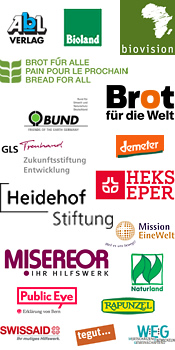Nachricht
06.04.2018 | permalink
Agricultural intensification in Europe has led to biodiversity loss, scientists warn

The biodiversity of Europe and Central Asia continues to decline, with land-use change being the main driver. Production-based subsidies have led to intensification in agriculture and forestry, accelerating biodiversity loss. This is the message of the regional assessment of biodiversity and ecosystem services for Europe and Central Asia, one of four landmark science reports released in March by IPBES, an intergovernmental body on biodiversity. The four regional reports cover the Americas, Asia and the Pacific, Africa, as well as Europe and Central Asia and were written by more than 550 leading experts from more than 100 countries over the past three years. In every region, with the exception of a number of positive examples, biodiversity and nature’s capacity to contribute to people are being degraded, reduced and lost due to a number of common pressures – habitat stress; overexploitation and unsustainable use of natural resources; air, land and water pollution; increasing numbers and impact of invasive alien species and climate change, among others.
According to the Summary for Policymakers of the regional report for Europe and Central Asia, natural ecosystems are in a bad state. Wetlands have declined by 51% since 1970 and natural and semi-natural grasslands, peatlands and coastal marine habitats have been degraded. “A total of 73% of the assessments of the European Union’s freshwater habitat types show an unfavourable conservation status. Across Europe and Central Asia, lakes, ponds and streams are altered and disappearing as a consequence of agricultural intensification, irrigation and urban development combined with climate change,” the summary reads. The authors mention the case of the Aral Sea, once the fourth largest lake in the world, which has now almost disappeared due to water abstraction for crop cultivation.
Of the assessed species living exclusively in Europe and Central Asia, 28% are threatened. Among the most endangered species groups are mosses and liverworts, half of which are threatened with extinction. In Western and Central Europe and the western parts of Eastern Europe at least 37% of freshwater fish, 33% of both freshwater snails and vascular plants, as well about 23% of amphibians are currently threatened with extinction. About 71% of fish and 60% of amphibians with known population trends have been declining over the last decade. Across Europe and Central Asia, 42% of terrestrial animal and plant species with known trends have declined in population size over the last decade. The authors found that the main causes of this decline are habitat loss, degradation and pollution due primarily to unsustainable agriculture and forest management, natural resource extraction and invasive alien species. Monocultures, and all forms of homogenization of landscapes, such as the conversion of grasslands to crops, and agricultural intensification have caused uniformity in species composition and thus declining diversity.
According to the authors, nature’s material contributions to people, such as food and energy, have been promoted at the expense of other functions. “The people of the region consume more renewable natural resources than the region produces,” said Prof. Markus Fischer, co-chair of the Europe and Central Asia report. For example, Western Europe’s ecological footprint is 5.1 global hectares per person and its “biocapacity” is 2.2 hectares per person, meaning Western Europeans depend on net imports of renewable natural resources and material contributions of nature to people. Food availability in Central and Western Europe relies significantly on imports from countries, both outside and within the region, particularly on millions of hectares of cropland harvested per year in Argentina, Brazil, China and the US. “Although this is somewhat off-set by higher biocapacities in Eastern Europe and northern parts of Western and Central Europe,” Prof. Fischer added.
The authors warn that economic growth, as measured through traditional gross domestic product (GDP), across Europe and Central Asia has indirectly reinforced drivers of biodiversity loss. Policy instruments persist, such as harmful agricultural and fishing subsidies, which continue to impede transitions towards a sustainable future. However, the authors also stress that this can be changed and that a range of promising policy options are available to safeguard biodiversity. These include measuring national welfare beyond GDP. Decoupling economic growth from environmental degradation would require a transformation in policies and tax reforms across the region, assisted by new indicators that incorporate well-being, environmental quality, employment and equity, biodiversity conservation and nature’s ability to contribute to people. Speaking about these policy options, IPBES chair Sir Robert Watson said: “Although there are no ‘silver bullets’ or ‘one-size-fits all’ answers, the best options in all four regional assessments are found in better governance, integrating biodiversity concerns into sectoral policies and practices (e.g. agriculture and energy), the application of scientific knowledge and technology, increased awareness and behavioural changes.” (ab)

